The power steering in your car relies on a type of hydraulic fluid, known as power steering fluid, to operate. This is an essential element that transmits pressure using hydraulic or electric actuators to where it is needed. This ensures that the power steering works effectively and smoothly, and it also lubricates all of the components that are involved.
To maintain your vehicle, you should check the power steering fluid condition and levels every year or two. If the levels are low, you’ll have a lot of difficulties steering, which can lead to dangerous situations.
- How to Choose the Best Power Steering Fluid
- Top 10 Best Power Steering Fluids 2025
- 1. Best Overall Pick: Lubegard 23232 Complete Synthetic Power Steering Fluid
- 2. Best Budget Pick: Prestone AS261 Power Steering Fluid
- 3. Best Premium Pick: Pentosin CHF 11S Synthetic Hydraulic Fluid
- 4. Best for Honda: Honda 08206-9002PE Power Steering Fluid
- 5. Best for Ford: Ford Motorcraft Mercon-V Automatic Transmission and Power Steering Fluid
- 6. Best for Nissan: Genuine Nissan Fluid 999MP-AG000P Power Steering Fluid
- 7. Best Leak Protection: Lucas 10008 Power Steering Stop Leak
- 8. Idemitsu Universal Power Steering Fluid for Asian Vehicles
- 9. Royal Purple MAX EZ Power Steering Fluid
- 10. Johnsen's 4611 Power Steering Fluid
- A Complete Guide to Power Steering Fluid
- Ask a Professional if You’re Not Sure
How to Choose the Best Power Steering Fluid
Choosing the best power steering fluid isn’t as easy as it sounds. You need to look for something that is both compatible with the make of your vehicle and able to do a great job at lubricating and protecting the power steering system. We’ve broken down all of our recommendations based on these two factors. Let’s take a look at what these factors mean.
Compatibility
Each power steering fluid is designed for a specific range of vehicles. Some power steering fluids are great for all Asian makes, like Toyota and Honda, while others are more compatible with European cars.
Most newer vehicles use synthetic-based hydraulic fluids because they work well in both low and hot temperatures. They also do a great job of improving pump lubrication and longevity. In general, European and Japanese vehicles have unique requirements for the type of power steering fluid that can be used. Some factors that you’ll need to consider are whether the power steering fluid is mineral-based or synthetic, and its viscosity index.
To check what type of power steering fluid your vehicle needs, check under the hood, and look for the power steering fluid reservoir. The reservoir is usually made of either clear, black or white plastic and has an identifying cap. The cap or the reservoir should have the information that you need.
If you can’t find the reservoir, find the power steering pump and follow the large rubber line. That’s the low-pressure line, and it’ll lead you from the pump to the reservoir where you’ll find the information you’re looking for. Some vehicles may require special additives in the fluid. You can also find this information in the owner’s manual for your vehicle.
Performance
To fully understand whether a power steering fluid has performance, you must first understand what it’s supposed to do in the first place. In general, you can expect all power steering fluids to be able to do the following:
- Lubricate the pumps, valves, and all other parts involved with the power steering. This lubrication will protect the components against friction, which can cause premature wear and tear and reduce the overall lifespan of the power steering system.
- Maintain a clean system and equipment by preventing the formation of sludge. This will ensure optimal performance throughout the use of the vehicle.
- Cool the power steering system when it heats up. Basically, all power steering fluids should withstand high temperatures.
In this section, we will look at whether the power steering fluid can do anything extra. This includes protecting the hoses and seals or operating in cold temperatures.
Other Applications
This is a bonus. Some power steering fluids can be used as transmission fluid, brake fluid, and more. If you can find a product with multiple uses, you could easily save some space in your garage. Make sure to always check your owner’s manual for compatibility uses when it comes to other applications.
Top 10 Best Power Steering Fluids 2025
1. Best Overall Pick: Lubegard 23232 Complete Synthetic Power Steering Fluid

Editor’s Rating:
Volume: 32 fluid ounces
Overview
This completely synthetic power steering fluid is one of the best synthetic options, as it does a great job at reducing friction within the power steering system and will extend its overall life. It offers unique anti-wear protection that outperforms OEM power steering fluids by leaving fewer wear scars. The lower the scarring, the better the power steering fluid is able to protect against wear and damage from daily driving.
Compatibility
This power steering fluid is suitable for all North American, European and Asian manufactured cars. Some of the applications that it’s suitable for include Dexron II ATF, Hyundai PSF-4, Kia-PSF-IV, Mitsubishi PS Fluid, Nissan Fluid A, Ford Type F, ATF Type G and Mazda ATF M-V. This power steering fluid is likely to work for your vehicle regardless of what make it is.
Performance
When it comes to performance, this is where the Lubegard 23232 Complete Synthetic Power Steering Fluid really shines. This power steering fluid works in both extremely high and low temperatures and has exceptional viscosity stability at both extremely high and low temperatures (-41℉ to 130℉) as well, with improved performance at low temperatures.
This superior power steering formula not only reduces friction but acts as a potent rust and corrosion protective agent. The patented technology can protect seals and hoses by reducing the risk of leaks and prolonging the life of all parts within the power steering system. It can also eradicate rack and pinion stiffness, eliminate power steering noises and whines and can clean sticky turbines and pumps.
Other Applications
This power steering fluid is suitable for use in almost all modern automotive hydraulic systems that require high performance, synthetic hydraulic fluids. It can be used in shock absorbers, level control systems, traction control systems and electro-hydraulic convertible top mechanisms.
Pros
- Universal compatibility
- Protects against both low and high temperatures
- Improves overall performance and longevity
- Reduces friction for better power steering
Cons
- More expensive than some other universal power steering fluids on the market
2. Best Budget Pick: Prestone AS261 Power Steering Fluid

Editor’s Rating:
Volume: 32 fluid ounces
Overview
The Prestone AS261 Power Steering Fluid is one of the more affordable options out there. It prevents abnormal wear and tear by reducing friction within the power steering system and enhances the overall durability and longevity of the parts. Use this power steering fluid for a smoother operation.
Compatibility
Unlike the Lubegard 23232 Complete Synthetic Power Steering Fluid, which offers universal compatibility, the Prestone AS261 Power Steering Fluid is designed for GM, Ford and Chrysler vehicles. It can also work well on most foreign cars and small trucks. It meets the requirements of all of these car manufacturers, so this fluid won’t void your warranty.
Despite being made by a third-party vendor, it is compatible with many factory fluids, so a flush is not always necessary, and you can simply top up your power steering system with this fluid.
Performance
This power steering fluid was formulated to help protect modern power steering systems against pump breakdown and squeals caused by foaming, oxidation and wear. It works with both high and low mileage vehicles and pours even at sub-zero temperatures.
The formula contains anti-wear agents that extend the lifespan of the power steering system and it comes with seal conditioners that can prevent leakages from happening again. Despite being a budget option, this power steering fluid has a lot to offer!
Other Applications
Unlike the Pentosin CHF 11S Synthetic Hydraulic Fluid, this product can only be used as a power steering fluid.
Pros
- Contains anti-wear agents that will protect all pump components
- Prevents abnormal wear
- Maintains a smooth power steering operation
- Stops squealing
Cons
- Not an ideal choice for Asian manufactured cars

Editor’s Rating:
Volume: 33.8 fluid ounces
Overview
If you’re looking for a premium product that has a lot to offer, you can’t go wrong with the Pentosin CHF 11S Synthetic Hydraulic Fluid. Although this product is a bit pricier than other power steering fluids out there at the moment, it can be used for many other purposes. This is a high-performance synthetic fluid that will protect multiple systems.
Compatibility
This power steering fluid doesn’t have universal compatibility, but it is compatible with many car makes, like Audi, Bentley, BMW, Chrysler, Dodge, Ford, Jeep, Mercedes-Benz, Mini Cooper, Porsche, Saab, Volkswagen, and Volvo. It’s not as compatible with Asian manufactured vehicles, like Honda.
Performance
This synthetic high-performance hydraulic fluid can be used in extreme weather conditions from -40℉ to 266℉. It prolongs the life of multiple components of different systems, and the fluid itself has a relatively long life, so it can last for much longer than other brands. It protects the car from oxidation and corrosion and will greatly enhance the power steering performance.
Other Applications
This power steering fluid is a hydraulic fluid designed for any automotive hydraulics with high technical requirements. Other than in the power steering, it can also be used in the level control, shock absorber, hydro-pneumatic suspension, central lock systems and hydraulics for convertible tops. This fluid can be used for stability and traction control. One can is able to replace all of the hydraulic fluids that your car may ever need.
Pros
- Multi-purpose hydraulic fluid
- Suitable for extreme weather conditions from -40℉ to 266℉
- Suitable for a wide range of vehicles
- High-performance synthetic fluid
- Prolongs the life of various systems
Cons
- Pricey
- Not usually compatible with Asian manufactured vehicles
4. Best for Honda: Honda 08206-9002PE Power Steering Fluid
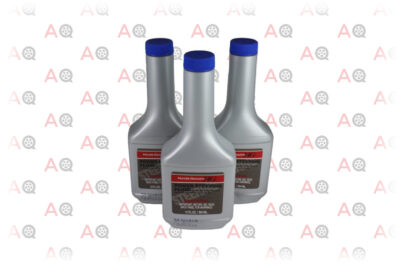
Editor’s Rating:
Volume: 12 fluid ounces x 3
Overview
If you don’t want to risk voiding any warranty and want to make sure that the power steering fluid is compatible with your Honda, you should go with this genuine OEM fluid. This product comes in a pack of 3 and is recommended by Honda for all Honda vehicles.
Compatibility
This is a genuine Honda OEM fluid that will lubricate and reduce the friction in power steering systems of all Honda vehicles. Other power steering fluids may damage Honda vehicles, so this is the perfect choice for you if you have a Honda. You will need 3 bottles of this power steering fluid if you plan on flushing the entire system.
Performance
This power steering fluid will protect the seals and will lubricate the entire system to improve overall steering. It also transmits pressure within the system to get rid of any whining or squealing sounds. Using this power steering fluid will lengthen the life of power steering systems in Honda vehicles.
Other Applications
This product is recommended for use only as a power steering fluid. It should not be used for anything else.
Pros
- Genuine Honda OEM fluid
- Protects the power steering system
- Transmits pressure to get rid of whining and squealing sounds
- Improves steering
Cons
- Only compatible with Honda vehicles
5. Best for Ford: Ford Motorcraft Mercon-V Automatic Transmission and Power Steering Fluid
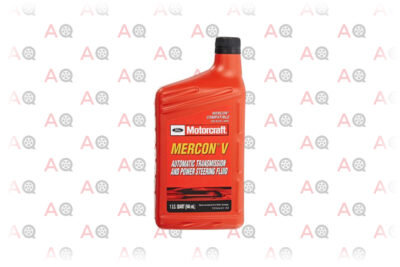
Editor’s Rating:
Volume: 32 fluid ounces
Overview
This is a unique power steering fluid formulated by Ford. Ford introduced Mercon and Mercon-V fluids in 1987. The Mercon-V is the most common Ford automatic transmission fluid (ATF), but it shouldn’t be used for transmissions that require Ford Type F fluids.
Mercon-V is a bit different from Mercon, as it contains an additive that is suitable for use in vehicles with older seals. It’s formula also has additional friction modifiers that make it more slippery than Mercon, so it’s able to do a better job at lubricating newer systems.
This is a fully synthetic ATF and it shouldn’t be mixed with any Mercon or Valvoline power steering fluids. If your car has those fluids, you’ll need to do a full flush rather than just top the power steering fluid up in the reservoir.
Compatibility
Much like how the Honda 08206-9002PE Power Steering Fluid is designed specifically for Honda cars, the Ford Motorcraft Mercon-V Automatic Transmission and Power Steering Fluid is formulated specifically for Ford, Mercury and Lincoln cars.
Performance
This premium hydraulic fluid is a hydro-processed base oil that has a high viscosity index. It contains performance additives that make it resistant to oxidation, corrosion, rust, deposits and daily wear. It’s a unique red color, so it’s easy to detect leaks. It can also guard against transmission shudder and be used in both low and high-temperature settings. The agents inside this fluid prevent sludge, foam and gum from forming, so the steering system turns smoothly even with age.
Other Applications
This hydraulic fluid can be used as both an automatic transmission fluid and a power steering fluid, so one bottle can do a lot of different types of maintenance for your Ford vehicles.
Pros
- Genuine Ford OEM fluid
- Contains a lot of performance additives
- Can be used in both low and high temperatures
- Prevents the formation of sludge, foam and gum
- Offers wear protection
Cons
- Only suitable for Ford, Mercury and Lincoln cars
6. Best for Nissan: Genuine Nissan Fluid 999MP-AG000P Power Steering Fluid
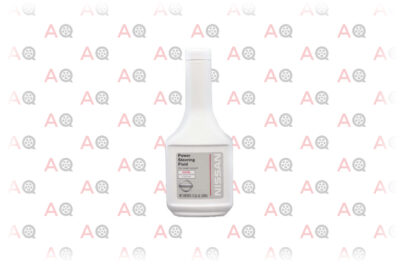
Editor’s Rating:
Volume: 32 fluid ounces
Overview
A lot of people prefer using OEM fluids. This Genuine Nissan Fluid 999MP-AG000P Power Steering Fluid is formulated specifically for Nissan vehicles although it can be used in other makes as well. This power steering fluid does a great job of lubricating and reducing the amount of friction within the power steering system. While this product is great for Nissan vehicles, it is a bit pricey in comparison to other power steering fluids on the market
Compatibility
This power steering fluid is formulated specifically for Nissan cars, but it can also be used in most European and American manufactured vehicles. As this is a Nissan OEM fluid and is the exact OEM fluid that comes in all Nissan vehicles, it will not void the manufacturer’s warranty.
Performance
This specialty formula can prolong the life of both conventional and’ rack and pinion’ steering systems and improve their overall performance and longevity. It contains detergents and stabilizer additives that reduce bearing and rack and valve wear. It can also prevent seals from shrinking and hardening.
Other Applications
This power steering fluid is not recommended for any other applications.
Pros
- Genuine Nissan OEM fluid
- Formulated specifically for Nissan vehicles, but also compatible with domestic and foreign cars
- Can improve the overall performance and longevity of both conventional and' rack and pinion' steering systems
- Prevents seals from shrinking and hardening
- Contains stabilizer additives to protect against daily wear
Cons
- A bit pricey
7. Best Leak Protection: Lucas 10008 Power Steering Stop Leak
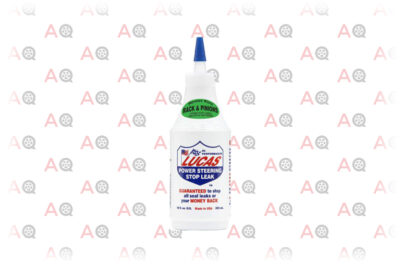
Editor’s Rating:
Volume: 32 fluid ounces
Overview
Unlike products like the Pentosin CHF 11S Synthetic Hydraulic Fluid, which comes in a jug, this power steering fluid comes with a sharp tip that makes it easy to pour so you can easily avoid spillages. This power steering fluid does a great job of reducing friction.
Compatibility
This is a universal power steering fluid that can be used with many vehicle makes. You can pour it into the power steering reservoir by itself, although most experts recommend flushing the system first to avoid mixing different fluids and oils together.
Performance
This power steering fluid can also eliminate squeals, slack, hard spots and tight steering. It’s guaranteed to stop seal leaks, if it doesn’t, you’ll get your money back! The unique formula can also condition O-rings and stop ‘rack and pinion’ steering problems from emerging in the first place.
The blend of special oils, petroleum, and additives will reduce friction and stiffness in the system and reduce the effects of daily wear and tear, which will maximize the life of the entire system. It’s also highly recommended for high-performance situations, as it can stop fading and foaming problems in their tracks!
Other Applications
This power steering fluid is not recommended for any other applications.
Pros
- Universal fluid
- Guaranteed to stop leaks
- Reduces stiffness and friction
- Prevents wear and tear
- Conditions O-rings
Cons
- Should avoid mixing with other fluids whenever possible
8. Idemitsu Universal Power Steering Fluid for Asian Vehicles
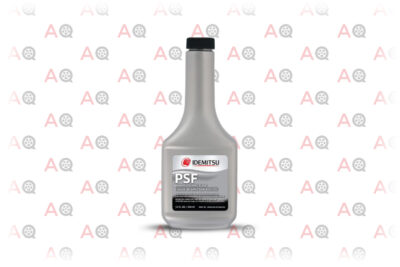
Editor’s Rating:
Volume: 12 fluid ounces
Overview
If you own an Asian manufactured vehicle, you should consider the Idemitsu Universal Power Steering Fluid for Asian Vehicles. It’s made from premium quality base oils and contains some of the latest additive technologies. This is a very budget-friendly choice, and one bottle will usually be enough to fill up an entire reservoir.
Compatibility
This premium OE power steering fluid is formulated specifically for use in Honda, Acura, Hyundai, Isuzu, Infiniti, Lexus, Mazda, Mitsubishi, Nissan, Scion, Subaru, Suzuki, and Toyota vehicles. It can also be used in other Asian manufactured vehicles that do not use electronic power steering systems.
Performance
This power steering fluid is made with an advanced formula that protects the entire power steering system and enhances its performance and longevity even under the most severe operating conditions. It has unique friction technology that lubricates the system and ensures a noise-free operation and a robust anti-wear technology that increases fluid durability and life.
This power steering fluid is made from premium quality base oils with the latest additive technologies that are compatible with seals, gaskets and other internal components. This fluid can reduce the potential for leaks and lead to smoother steering performance.
This product can be used in low and high temperatures and has a superior low-temperature performance. It can also protect against pump cavitation.
Other Applications
This power steering fluid is not recommended for any other applications.
Pros
- Unique friction technology lubricates system for efficient and quiet operation
- Provides outstanding protection to the entire power steering system
- Offers superior low-temperature performance
- Protects against pump cavitation
- Possesses anti-wear technology that improves fluid durability and life
Cons
- Only compatible with Asian manufactured vehicles
9. Royal Purple MAX EZ Power Steering Fluid
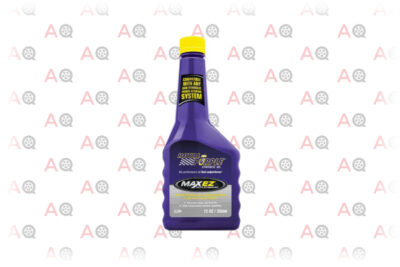
Editor’s Rating:
Volume: 12 fluid ounces
Overview
The Royal Purple Max EZ is an affordable third-party fluid that will get the job done. It lubricates and rejuvenates the power steering system and will maximize its life. Another interesting thing about this power steering fluid is that it has a prolonged drain period, so it’s extremely cost-effective.
Compatibility
This synthetic oil power steering fluid is compatible with any OEM hydraulic power steering system and is touted as having the ability to outperform many other OEM and third-party fluids. With that said, this fluid works better on synthetic pumps than non-synthetic pumps.
Performance
On top of extending the pump and fluid life, this high-performance power steering fluid is a conditioner that will rejuvenate the seals in the system without causing them to harden. The formula contains Proprietary Synerlec additive technology, which strengthens the oil so that it can provide extra protection and a higher performance.
This technology also protects metal parts and components from scuffing or scoring. In fact, this power steering fluid has a film strength that is up to 400% stronger than other synthetics on the market, so it can greatly reduce the effects of daily wear and extend the life of the equipment. When it comes to lubrication, this power fluid can reduce friction by up to 78.7% when compared with conventional lubricants.
There are thermal additives that can help your system run cooler and ensure that your power steering runs quietly and efficiently.
There are many other additives in the formula. These additives can also prevent sludge from forming, so your system stays clean and hygienic. The non-foaming formula prevents rust formation and is also resistant to corrosion caused by acids.
Other Applications
This power steering fluid is not recommended for any other applications.
Pros
- Compatible with a wide range of makes
- Can be mixed with conventional fluids without resulting in any damage
- Extends the pump's life
- Offers corrosion and rust protection
- Uses Proprietary Syneriac additive technology
Cons
- Not an ideal choice for non-synthetic pumps
10. Johnsen's 4611 Power Steering Fluid

Editor’s Rating:
Volume: 128 fluid ounces
Overview
Made by the Technical Chemical Company, this power steering fluid contains a lot of innovative technologies and some of the latest additive technologies. You get a lot of product for the price. It’s enough to not only top up the reservoir, but also flush the entire power steering system.
Compatibility
This is another popular choice because it is a high-quality product that is suitable for use in most vehicles, and can be mixed with most factory fluids. This is a huge advantage, as you won’t have to flush the entire system in order to get rid of any remaining fluids that may still be in the system. This allows you to make a quick fluid change, so you can get back on the road as soon as possible, as flushing the system can take some time.
Performance
The formula is made with high-quality oils and plasticizers that lubricate the entire system, prevent the seals from hardening, stop the pumps from squealing and protect the power steering system from unusual wear. It’s also non-foaming and non-corrosive. The top-class additives ensure that the steering unit turns freely with ease.
Other Applications
This power steering fluid is not recommended for any other applications.
Pros
- Great for those on a budget
- Conditions seals to prevent premature wear
- Stops slipping
- Prevents unusual wear
- Can be mixed with other factory fluids
Cons
- Need to take caution when pouring because it comes in a huge jug
A Complete Guide to Power Steering Fluid
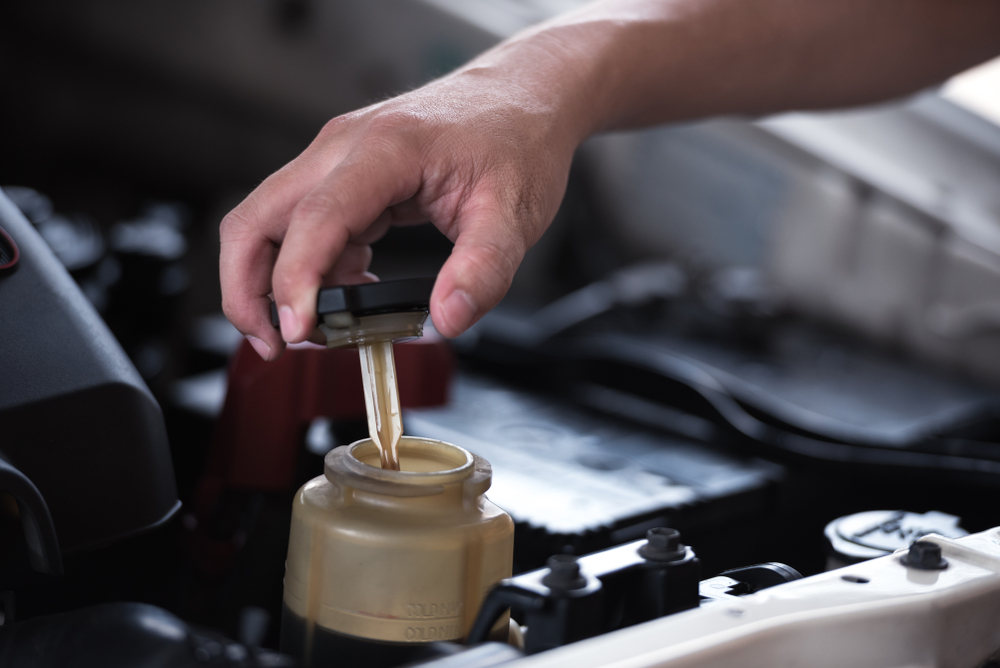
There are many people who don’t know what to look for when buying power steering fluid. They either think they’re all the same or mistake them for any hydraulic fluid or even automatic transmission fluid. There are so many factors that you need to consider. Other than the compatibility of the fluid and whether it offers any performance, consider the other factors below.
The Difference Between Hydraulic and Electric Power Steering
The two main types of systems involved with power steering are hydraulic and electric. Hydraulic systems rely on an actuator, and the hydraulic cylinder is part of the servo system. There is a mechanical link between the steering wheel and the components and parts that steer the vehicle’s wheels. These systems may be more popular than electric systems because the vehicle can still be steered manually even if the power steering system fails.
Electric systems, on the other hand, rely on electric motors rather than actuators. There are sensors that detect the position and torque of the steering system, and these readings are sent to a computer module within the dashboard, which then regulates and controls the power steering column and motor.
Mineral-Based vs. Synthetic Fluids
Mineral-based fluid, also known as convention fluid, is the most traditional type of power steering fluid and comes from crude oil. This type of fluid is mainly used for older vehicles. It tends to be less expensive and is typically compatible with many systems.
Synthetic power steering fluids, on the other hand, do not come from crude oil but are formulated from natural gas and other base materials like polyalphaolefins. Unlike mineral-based oils, synthetic oils tend to be more consistent, so they have more predictable life cycles and more consistent fluid properties.
These types of fluids tend to have an increased viscosity index and will typically last longer. They are able to better handle the rigors of operation without degrading or oxidizing as rapidly as mineral-based fluids. Synthetic fluids also tend to do better in low temperature environments and have lower pour points.
OEM vs. Third-Party Products
Original Equipment Manufacturer (OEM) certified fluids are made by the same manufacturer as your car. These products are designed specifically to be compatible with a certain make. For example, the Honda 08206-9002PE Power Steering Fluid is designed specifically for all Honda vehicles, like Civics, Accords and Pilots.
When you use an OEM-certified power steering fluid, you know that you’re topping up the fluids in your system with the same type.
There are some third-party fluids as well, like the Royal Purple MAX EZ Power Steering Fluid, which is compatible with basically all makes. Some other third-party power steering fluids, like the Idemitsu Universal Power Steering Fluid for Asian Vehicles is designed specifically for Asian makes, like Honda, Toyota and Lexus.
While these power steering fluids tend to be less expensive, you also run the risk of using a product that may not necessarily be the best for your vehicle. This is why it’s important to be extra careful when purchasing third-party products.
How to Change Power Steering Fluid
Take a look at the video above for a video walkthrough on how to change the power steering fluid in your car. This process is the same regardless of whether you drive a truck or a sports car. We’ve also noted the steps down below, so you can go through it in more detail.
Step #1. Look for the Power Steering Reservoir Cylinder
The first step is to look for the reservoir cylinder. It’s usually near the power steering pump and made of either plastic or metal. It is almost always clearly labeled.
Once you find the power steering pump, follow the large rubber line attached and it’ll lead you to the reservoir. The reservoir is located in the same place in most cars, although some newer vehicles may place the reservoir somewhere else in order to save space. If you still can’t find the reservoir cylinder, check your owner’s manual!
Step #2. Check the Power Steering Fluid Level and Condition
If the reservoir is made of clear plastic, you might be able to see how much fluid is inside; if not, you’ll probably need to use a dipstick that’s attached to the cap. To use a dipstick, wipe off any excess fluid that may be on the stick before sticking it into the reservoir again and pulling it out. This will give you an accurate measurement of where the fluid reaches.
On some cars, you’ll find two different measurements on the dipstick: “hot” is for when the engine is running and “cold” is for when the engine has been off for some time. Some dipsticks will also have “min” and “max” lines to give you a range of where the fluid level should be.
It’s also important to examine the color of the power steering fluid. Ideally, the fluid should either be clear, amber or pink. If the fluid is brown or black, it means that it contains contaminants, like bits of rubber from the connecting hoses. You should take your car for servicing if this is the case. If the fluid is contaminated, you’ll likely need to flush the power steering system.
Step #3. Top Up the Reservoir to the Correct Fill Level
If the fluid looks fine, simply top up the reservoir to the correct fill level. Make sure that you use a fluid that is compatible with your car and be careful not to overfill the system. In fact, most experts would probably say that it’s better to underfill than to overfill the system, as power steering fluid expands as it heats up. If you overfill the system, the expansion causes pressure to build up within the system, and this can lead to some fairly expensive repairs.
Step #4. Replace the Cylinder Cap
Don’t forget to replace the cylinder cap and push or screw it into place. It’s a common rookie mistake to forget about it altogether! Always double-check to make sure that the cap is firmly attached before you close the hood.
Step #5. Turn on the Engine
After everything is done, start the engine and turn the steering wheel as far as it can go to the left and to the right. You might want to do this a couple of times. It will work out any air that may still be trapped in the system.
Frequently Asked Questions
If you’re not a car fanatic or if you don’t usually do any car maintenance yourself, you may be at a loss as to when you need to refill the power steering fluid of your car. We’ll look at some of the most frequently asked questions below.
How Do I Know Whether the Power Steering Fluid Is Low?
If you’re simply leasing a car, you likely won’t have to change the power steering fluid during the entire term of your lease, as these fluids typically last a long time. However, if you own an older vehicle, changing the power steering fluid is something that you should definitely add to your to-do list. You’ll see a huge difference when trying to steer your car.
It’s not difficult to tell whether the power steering fluid is low or needs to be changed. The most obvious signs are:
Difficulties steering. This is perhaps the most obvious sign that your power steering fluid is low. You may notice that you can’t turn the steering wheel as easily. You’ll feel some type of resistance. This is because there’s not enough fluid to facilitate the movement of all of the components inside. Difficulties steering can also mean that there’s a leak somewhere. You’ll want to check the hose that’s attached to the power steering column for any fluids. If there is a leak, replacing the fluid will only be a short-term fix.
Squealing or whining noises whenever you try to turn the steering wheel. Both electric and hydraulic power steering systems rely on pumps. If there isn’t enough fluid inside the system, air will get trapped in different places and cause the entire system to make some weird noises and sounds whenever you try to turn the steering wheel. Topping up the fluid reservoir with some power steering fluid should make the noises go away immediately.
Vibrating and jerky steering. If your steering wheel ever starts to vibrate when you’re driving, you’re going to have difficulties controlling the vehicle. This is also a sign that the power steering is low in fluid. This is the same if the power steering jerks to the left or the right for seemingly no reason.
No fluid inside the column. If you take off the cap and see no fluids inside the column, then you need to top it up!
If you notice any of the signs above, take a look at the condition and level of the power steering fluid. You definitely want to take care of this problem sooner rather than later, as it will only worsen and exacerbate with time.
How Often Should You Change the Power Steering Fluid?
It’s not necessary to change the power steering fluid often. It doesn’t wear down or get dirty too easily. Most experts recommend checking or replacing the power steering fluid every 5 years or every 50,000 miles, whichever comes first. Replacing the power steering fluid can help lengthen the power steering system’s life and prevent costly repairs in the future.
Can You Use Transmission Fluid as Power Steering Fluid?
This is a common question that comes up time and time again.
Both automatic transmission fluids (ATFs) and power steering fluids (PSFs) are hydraulic fluids; however, they’re responsible for very different jobs. ATFs are typically red in color and have a distinct sweet smell. On the other hand, PSFs are usually clear, amber or pinkish in color and smell more like burnt marshmallows.
Other than being different in appearance, these hydraulic fluids also contain very different chemicals. ATFs contain detergents and friction modifiers that filter grease and dirt and prevent excessive heat buildup in the valves. PSFs do a completely different job. The chemical components lubricate and reduce friction between the various parts within the steering system and provide hydraulic pressure.
Because these two fluids do completely different jobs, it’s not a good idea to interchange the two. Using the wrong type of fluid frequently can damage both systems. As ATFs tend to be more sticky and gluey, they actually enhance friction between the components within the power steering system. In the long run, this can lead to irreparable damage to the seals of the pump and the gearbox. Using a PSF that’s approved for your car is the best way to prevent premature and unnecessary wear and tear.
With that said, there are some hydraulic fluids, like the Pentosin CHF 11S Synthetic Hydraulic Fluid, that can double up as both a power steering fluid and an automatic transmission fluid.
Can I MIX Power Steering Fluids From Different Brands?
In general, the answer to this question is a resounding yes.
Most power steering fluids are compatible with other power steering fluids, and you can easily combine synthetic-based ones with mineral-based ones without seeing a huge effect on your vehicle. Some manufacturers, however, will require that you use a specific type of power steering fluid in your vehicle.
While mixing different fluids together may not necessarily damage your car, it may affect the individual performance of the fluids, so do keep that in mind! Most mechanics recommend flushing your system when changing from one power steering fluid to another. It’ll ensure a better performance!
Will the Use of a Particular Power Steering Fluid Void My Warranty?
Some people are hesitant to use third-party fluids rather than OEM as they are afraid that it will void their warranty. Luckily, most power steering fluids meet the warranty requirements established by most car manufacturers, so this isn’t something that you should necessarily worry about.
Ask a Professional if You’re Not Sure
At the end of the day, you should ask a professional if you’re not sure which power steering fluid to use. It’s always better to be safe than sorry. Finding the right power steering fluid can take some work. You’ll need to read up on the manufacturer’s requirements and take a look at what each product can do. The right power steering wheel can make a huge difference to the overall performance of the steering and the longevity of your vehicle.


